AMD Midrange Gaming
Let's start by pointing out the pink elephant hiding in the corner: there's no doubt that Intel has faster processors than anything AMD is currently shipping. Intel also has CPUs that overclock (percentage wise) a lot better than anything AMD currently offers. So why even bother considering AMD? There are several reasons. Price is the biggest attraction, which extends beyond the price of the CPU to the price of the platform as a whole. The other major consideration is that if you're talking about a gaming system, for the vast majority of systems the graphics card is going to be the most important aspect of gaming performance. The features you can get at a particular price point for an AMD setup are also very good. Now that that's out of the way....
| AMD Midrange Gaming System |
| Hardware |
Component |
Price |
Rebates |
| Processor |
Athlon 64 X2 5000+ AM2 Black Edition (2.6GHz 2x512K unlocked) - Retail |
$130 |
|
| Motherboard |
ASUS M2N32-SLI Deluxe WiFi (nForce 590 SLI) |
$167 |
|
| Memory |
Patriot Extreme Performance 2x1GB PC2-8500 (PDC22G8500ELK) |
$139 |
$25 |
| Video Card |
XFX GeForce 8800GTS 320MB (PVT80GGHF4) |
$287 |
$20 |
| Hard Drive |
Western Digital Caviar SE16 320GB 7200RPM 16MB (WD3200AAKS) |
$80 |
|
| Optical Drive |
Samsung 20X DVD+R SATA (SH-S203B) |
$36 |
|
| Case |
Cooler Master Centurion 534 (RC-534-KKN2-GP) |
$66 |
$10 |
| Power Supply |
Corsair CMPSU-520HX |
$108 |
$10 |
| Display |
Acer AL2216Wbd 22" 5ms (1680x1050) |
$235 |
|
| Speakers |
Logitech X-530 5.1 70W Speakers |
$66 |
|
| Keyboard |
Saitek Eclipse USB Wired (PZ30AU) |
$40 |
|
| Mouse |
Logitech G5 Wired Adjustable Weight |
$52 |
$15 |
| Operating System |
Windows Vista Home Premium 32-bit (OEM) |
$105 |
|
| Bottom Line |
$1511 |
$1431 |
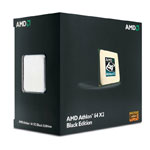 |
The core of any system is the motherboard and processor, and we've gone with AMD's latest X2 5000+ Black Edition sitting snugly in an ASUS M2N32-SLI Deluxe WiFi motherboard. The Black Edition's claim to fame of course is its unlocked multiplier, giving overclockers a little bit more flexibility. We've seen reports online of people hitting 3.4 GHz and beyond with a bit of effort. While just about any midrange Core 2 Duo processor will offer better performance at maximum stable overclock, the X2 5000+ is still relatively inexpensive and offers competitive stock performance. If you don't care about the unlocked multiplier, a regular X2 5000+ costs $10 less.
If you're undecided on what CPU or platform might be best, you might want to take a look at our
Midrange CPU Roundup from a couple weeks back. As long as you're willing to take overclocking out of the picture, you can get performance that's relatively competitive with Intel's Core 2 Duo E4400/E4500 with a CPU price that's nearly identical to the E4400 - or about $13 cheaper if you get the standard 5000+. Looking specifically at the gaming results from that article, performance tends to fall between those same two processors, at least at 1024x768 where we aren't GPU limited. If you're like most people and you plan to play at higher resolutions (for example 1680x1050 if you purchase the recommended LCD), performance differences are going to be even smaller.
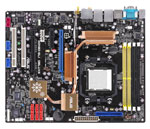 |
The ASUS motherboard offers SLI support, which might be something useful in the future, but for a midrange system we're going to stick with single graphics cards for now. The ASUS M2N32 Deluxe WiFi also comes with a bevy of overclocking options, ASUS' proven reputation, and integrated 802.11b/g WiFi support for good measure. If you will make use of all of these features, the final price is very good; if you don't need WiFi or dual x16 PEG slots, you can get basically the same performance and features for around $95 with the DFI Infinity NF570-M2/G.
As mentioned, the graphics card is probably the most important component for this type of system, and we had quite a few choices. We decided to go with a GeForce 8800 GTS 320MB, as it offers the most attractive price/performance ratio. Other than minor differences in factory clock speeds, all of the 8800 GTS cards are pretty similar, so the deciding factor was price. XFX ended up getting the nod, but EVGA, Gigabyte, Leadtek, and others are not too far off.
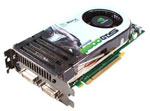 |
It's important to point out the runner-up cards that we didn't choose as well, as other factors might actually make them a better choice in the long-run. The 8800 GTS 320MB performs identically to the 640MB version, up until the point where you run out of graphics memory. Right now, that usually only happens at extreme resolutions like 2560x1600 or in a few certain games with maximum texture quality (which often doesn't bring a noticeable improvement in visual quality). That's right now, however; next-generation games could very likely push 320MB cards to the limit, particularly when we consider that 512MB cards have been shipping for a couple of years now. We have seen preliminary results on next-gen titles where the 640MB cards hold a pretty substantial performance advantage, so if you can spare the extra money that's probably the safer bet.
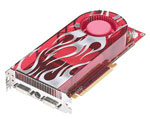 |
The other option is AMD's recently launched HD 2900 Pro, which in theory carries a similar price to the 8800 GTS 320MB. The drawback here is that the cards aren't readily available right now, and while this is an AMD platform we're using an NVIDIA chipset. MSRP is supposed to be around $250, but the few places that even have cards in stock are charging a price premium. Since the cards seem to be downclocked 2900 XT GPUs, you can probably get some pretty good overclocking results, but many people are simply interested in stock performance. You also get a $20 mail-in rebate on the GTS 320MB, and HD 2900 cards tend to really suffer when antialiasing is enabled. Finally, AMD and NVIDIA both have upcoming midrange cards that could very well improve performance while staying under the $250 price point; since these cards are not yet available, however, they will have to wait for a future Buyers' Guide.
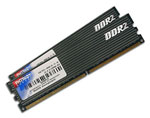 |
We're not going to spend a lot of time dwelling on the rest of the components, as many of them have been discussed in previous Buyers' Guides and/or reviews. We did choose to use some DDR2-1066 memory, which honestly might be overkill considering the price. $114 (after rebate) for 2GB of this type of memory might seem like a steal compared to a year ago, but if you're okay with DDR2-800 you can still pick up 2GB of 4-4-4 memory for a measly $75. In fact, one of the AnandTech editors did exactly that just this last week... twice! If you're thinking about upgrading to a 64-bit operating system, give some serious thought to running a 4GB configuration with DDR2-800 as opposed to 2GB of higher performance DDR2-1066.
The final price comes out to $1511 (not counting rebates). Depending on how you want to configure things, going with an AMD platform will save you somewhere between $15 and $100 compared to a similar Intel configuration. By no means is our AMD platform bad, but if we were to go out and purchase a midrange gaming system right now, it would be using a Core 2 Duo processor. Then again, we're enthusiasts, so overclocking is pretty much a given. If you can hold on a couple more months, we're definitely interested in some of the changes that will occur with AMD's upcoming product launches. The attraction of current AM2 systems is mostly price, and the gap there is really too small these days to make it a real deciding factor.















41 Comments
View All Comments
leexgx - Friday, October 19, 2007 - link
i got an customer that mite be wanting an Quad cpu with 8gb ram soon :) and it ant going to be running vista, it be XP x64 (he uses 3DS)so i need to start to look it up but i cant see there been any problem sticing 4x2gb sticks in one pc
The Boston Dangler - Tuesday, October 16, 2007 - link
"...the abit IP35-E is selling for $102 shipped, plus a $20 mail-in rebate. The quality of that motherboard is a bit suspect, however, with quite a few users reporting compatibility problems and other quirkiness. We haven't had any serious issues with our own test subject, but you might need to exercise a bit more patience if you go with abit."i'm considering this board. could you please link me to a description of these issues?
JarredWalton - Wednesday, October 17, 2007 - link
Read the Newegg comments (and take them with a grain of salt, most likely). You can also try googling for reviews, which may are may not result in useful information. Basically, Gary said the board is a good "budget midrange" offering, but the overall quality is definitely lower than what you would find in something like the IP35 Pro (which costs twice as much).yyrkoon - Wednesday, October 17, 2007 - link
Better yet, go to the ABIT forums, and READ. Newegg reviews are fairly subjective, with a lot of the reviewers obviously being seriously in-experienced when it comes to building systems.You probably will not see a more candid forum than the ABIT forums, or at the very least, they do not censor because of a posters dislike for a product. Incidentally, when buying a new motherboard, and if it is an ABIT board, the first place I go to is ABIT forums, and read.
n yusef - Tuesday, October 16, 2007 - link
As the owner of a Lian Li PC-7 Plus (a generation older than the 7B Plus II), I have to recommend against it. As a workstation case it is limited at three hard drive bays. This may have been fixed in the new version, but the front panel of my case is no longer attached. The bezel is connected to the case via four quite flimsy plastic pins, two of which have broken off. Although the pins can be replaced, a high end manufacturer like Lian Li should never produce such a poor design, especially on a case as simple as the PC-7 is.Pirks - Tuesday, October 16, 2007 - link
I don't understand this. I got myself 4GB of DDR2-667 RAM at newegg for _ONE HUNDRED DOLLARS ALTOGETHER_, which comes to $25 per 1 GB, and you always sugges this crazy overpriced $50 per 1 GB DDR2-800 memory. What the heck is this shoot?? Why pay almost twice more if you get just 2% of performance increase? Well, maybe 5% is you're really into synthetic Sandra stuff..I just don't get ya guys
JarredWalton - Tuesday, October 16, 2007 - link
DDR2-667 with an Intel platform and a 1333FSB is going to seriously handicap overclock, for one. AM2 will also suffer a 5-10% performance loss compared to DDR2-800 at stock speeds. If you're happy with cheap DDR2-667, by all means go for it. I've built enough systems over the years that I've learned from painful experience that cheap memory can create unforeseen problems. Basically, I'm not going to stake my reputation on it if I can avoid it. I spent $250 on DDR2 memory that's not as good as the $114 RAM recommended in this article, and that was less than a year ago. (That memory, incidentally, was RMA'ed when one stick failed after five months.)Pirks - Wednesday, October 17, 2007 - link
But it's not going to handicap overclock on those 800 MHz FSB Intel Allendales. Hence you can get seriously overclocked CPU with all its 40%-50% system-wide performance increase goodness for _much_ less money, compared to overclocking on duper expensive DDR2-1066 sticks.JarredWalton - Wednesday, October 17, 2007 - link
Okay, let's take the E4400. 10x333 will put the RAM back to DDR2-667 using 1:1 ratio. The CPU can likely handle that with appropriate $70 cooling. So you've spent $210 or so on your CPU+HSF. How does that compare to an E6750 that sells for $195? I haven't tested, but I'd imagine the OC'ed E4400 wins by a bit. Then you can OC the E6750 and close the gap. But using DDR2-667 with the E6750 (or E6550) means a 1:1 ratio already has the RAM at DDR2-667.$15 already has us about half way to the upgraded memory you despise, or we can just stick with the $75 stuff and see about pushing the E6550 to 7*400, or the E6750 to 8x400. Now we've topped out on inexpensive DDR2-800 (which you can probably push to 850-900 MHz if you make an effort, but I've had more than a few DDR2 modules fail after a few months of that). So go with DDR2-1066 and now with the right mobo you can try for as high as 7x533 without taking the RAM out of spec.
Feel free to disagree on what's more important, but the bottom line is that I would much rather spend a bit more money on quality RAM, especially when looking to overclock. At the top overclocks, I've seen performance differences of 20% with cheap RAM vs. high-end RAM - when trying to push the whole system to the maximum stable speed. With some time and effort, you might get that down to 10%, but for a 3% system cost increase I'm more than happy to eliminate most of that effort.
Pirks - Wednesday, October 17, 2007 - link
Okay, I got your point. When you invest $1500 in a new system then you can add another $100 to the cost of the memory, not a large difference compared to the total price. I was looking at this from the point of view of building gaming rig where it's usually better to invest in large high resolution monitor and high performance video card, while saving on CPU and RAM which are much less important for games, compared to video card/monitor combo.From the pure CPU overclocking perspective (ignoring games and 3D) your solution is better than mine, it's more expensive tho, but (I have to agree here) not much more expensive, considering total system price.